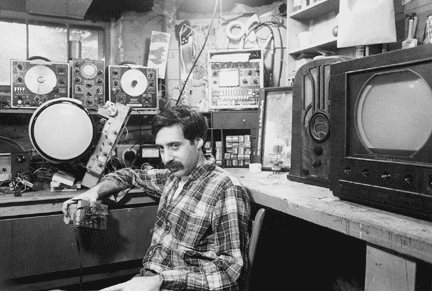
IN MEMORIUM: Howard J. Brannd, The Father of Psychoterminology

Howard Brannd, an emotionally troubled TV and radio repairman,
inspired the psychological community to modernize its terminology.
Abstruse communication has had no more generous friend in this century than Howard J. Brannd. Brannd gave new words to a field that was starved for vocabulary. It was he who brought technical jargon from the world of electric appliance repair to the field of mental health therapy.
Howard Brannd was an accomplished repair technician who specialized in fixing radios and, with the dawning of a new electronics age in the late 1940's, televisions. He came in contact with the world of psychotherapy during his first stay in a convalescent rest home. The visit was occasioned by a bout with mental exhaustion, an ailment that would continue to plague Brannd throughout his adult life.
In discussions with psychologists and psychiatrists, Brannd found that
his electronics terminology could be readily adopted into the language of
psychotherapy.
“Process,” “compatibility,” “resonance,”
“deflection,” “differentiation,” “overloaded,”
“scanning,” “resolution,” “saturation,”
“ghosts,” “shadow,” “mask.” These terms
all migrated unchanged, except for their meanings, from the mouth of the
humble TV repairman to the tongues of ten thousand therapists.
Other terms suffered some alteration in the journey. “Synchronization” became “synchronicity.” “Negative transmission,” a television concept in which white rather than black decreases the amplitude of the AM picture carrier signal, became “negative transference,” a psychotherapy concept that takes considerably more time and space to explain. “Antenna orientation” was transformed into the simpler “orientation,” and acquired sexual overtones.
In his later years, Brannd nurtured his love for capacitors, induction coils, resistors, rheostats and RCA vacuum tubes. He spent much time creating pastel and watercolor murals depicting the inner life of his favorite electronic components. Many of these paintings grace the walls of the Jimson Memorial Hospital, where he resided from June, 1957 until his passing last month.
© Copyright 2003 Annals of Improbable Research (AIR)
This is a HotAIR feature. For a complete list of features,
see What's New.